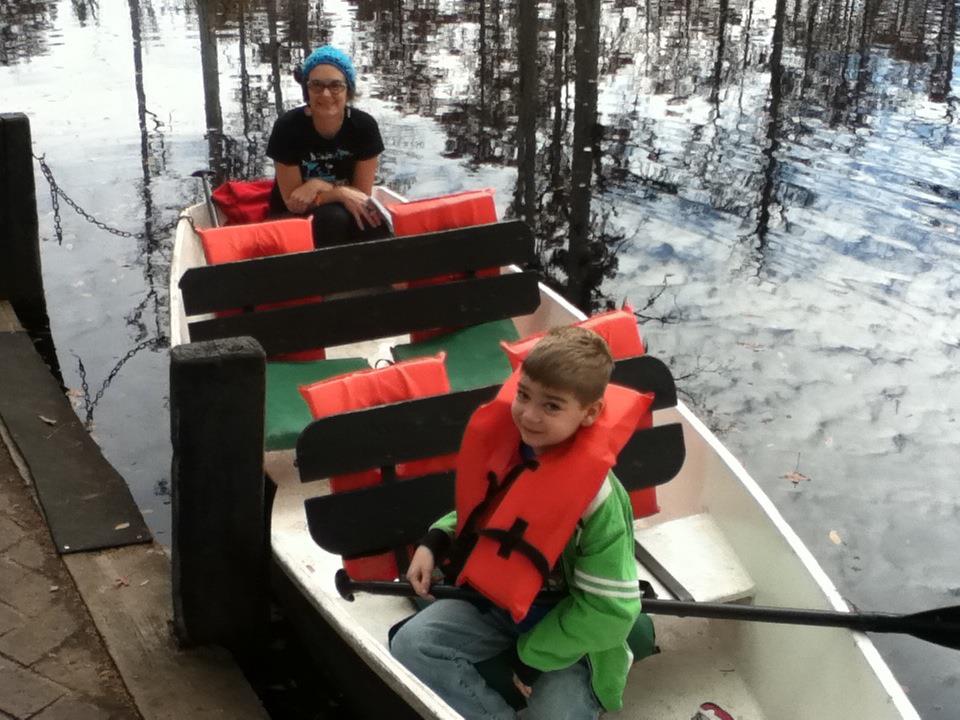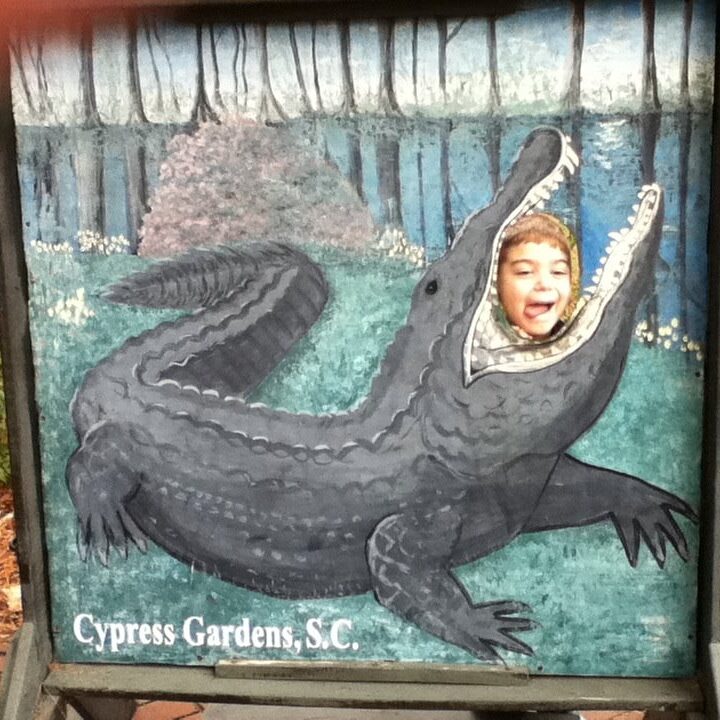In 2011, I took my son Fain on a road trip to South Carolina to get one of my favorite books, The Name of This Book is Secret, signed by one of my favorite authors, Pseudonymous Bosch, at one of my favorite literary events – YALLFEST, the Charleston Young Adult Book Festival. It was a roughly four-hour drive that I turned into nearly eight by my refusal to use GPS because “mama knows how to read maps,” a claim that Fain still calls into question today.
This meandering trip through the backwoods towns and tobacco fields of the Carolinas frequently involved circling back to some previously passed gas station or dilapidated barn to try again in another direction, circling back for more fuel, for more road candy to appease the kid in the backseat who was losing patience, circling back for directions (again).
I undertook the return trip with the GPS locked and loaded, more because I was exhausted and sated with scenic vistas than because I was repentant. However, to make amends, I agreed to a detour at Cypress Gardens, 80 acres of blackwater swamp in South Carolina.
While Fain was eager to see alligators, he was understandably dubious about trusting me with navigating the murky, Spanish moss-haunted canoe trail, but the nice man at the dock, who helped us get settled into our boat, reassured him that “mama doesn’t even need a map for this trip.” In theory, I just had to follow the clearly designated white arrows affixed to trees that mark the watery way.


Don’t worry. Nothing bad happens in this story. This is just a segue into a post about vultures, colloquially known as buzzards in the South, though that’s not scientifically accurate. Buzzards, real buzzards, are birds of prey who hunt small rodents and birds, kin to hawks and eagles.
True vultures, on the other hand, are scavengers who have evolved to feed on carrion due to environmental pressures, which is why they’re sacred to Zoroastrians, practitioners of one of the world’s oldest religions: vultures kill neither plants nor animals, making them uniquely harmonious in a violently discordant world.
Now, let’s circle back to the swamp, where I paddle seven-year-old Fain through a maze of tupelos and cypress. He alternates between scanning the trees in search of the next white arrow and leaning over the teetering boat’s gunwales to peer into the tannin-stained, leaf-choked water for the beady eyes of an alligator. High overhead a dozen or more black vultures roosting in the gray groves of skeletal swamp cypress follow our red canoe with equal interest as it bangs at stumpy tupelo knees and occasionally tangles with water hyacinth and duckweed.
The dew was heavy that morning, dampening the seats of the canoe, the hand-painted signboards, and the wings of the buzzards, and so they squatted up there with their vast, galaxy-black wings spread to their full five feet span, letting the first feathery rays of sunlight brush off the moisture like a timid maid with a great man’s raincoat. The dappled rays cowered at their taloned feet, and is it any wonder?
This committee of bleak, black birds is the harbinger of the end of days. They bring eternal evening when they circle overhead, riding updrafts in search of the dead and dying down below. They come for your eyes, and according to Zoroastrians, purify your remains through excarnation, in Latin, something like “de-meating.” You once were meat but are no more. Vultures free the soul.
I’d seen buzzards before this adventure through the swamp. They’re practically everywhere. The only place you won’t find some kind of vulture is in the polar regions and on some very remote Pacific islands. The place you’re most likely to run across them is on highways, feasting on other animals that someone else has already run across.
I’d seen them holding congress in cow pastures and circling in rising thermals to soar more than 9,000 feet above pine barrens below, encamped in barren lots outside of town and stomping around deer that had seen better days. But I’d never really seen buzzards until that morning in the swamp. I’d never seen them in all their macabre majesty, their ghoulish grandeur. Something about witnessing them all congregating there, way high up in the bare branches, shaggy, black palls eerily outspread, casting shadows in the tannin-brown water below, revealed to me their strange beauty.
Afterwards, I looked for buzzards everywhere, and they were everywhere I looked. Not just in fields and furrows, not just on scenic road shoulders, gullet-deep in fresh roadkill. They were in literature, too.
I taught American Lit to high school juniors that year, and buzzards greeted me from the pages of Zora Neale Hurston’s Their Eyes Were Watching God. It was clear that Hurston, another of my favorite authors, shared my affinity for the brooding, bald-headed birds. While the humans of the novel gather to mock Matt Bonner’s mistreated mule when it finally achieves its eternal rest, the buzzards come to “stand his funeral,” that is, to pay their solemn respects, to free the beleaguered creature from his life of servitude.
In another of my favorite novels, the century-spanning scifi epic A Canticle for Leibowitz by Walter M. Miller, Jr., vultures are present from the second paragraph until the tome’s grim conclusion, and all in between, they soar through the pages, circling above the dying characters and cultures, witnesses to a continual procession of apocalypses – the small, intimate ends of monks and mules and the expansive, all-consuming ends of civilizations.
Today, vultures themselves are facing an apocalypse. Worldwide, their populations are experiencing catastrophic declines due to poisoning, poaching, and collisions with power lines. This poses a real threat to the environment because, though vultures are the end of days, they are also the haggard mothers of fresh starts, transmuting polluted meat and decaying matter into essential nutrients, which they return to the earth through highly efficient, if grisly, feasts. They tirelessly cleanse their home ecosystems, neutralizing anthrax, rabies, and botulism as they ravenously consume contaminated remains that would otherwise remain as disease and spread death unchecked.
Look skyward, where they circle endlessly, no need for maps or GPS. They soar with uncanny knowing over their landscape, following invisible arrows to the end of the world and back. They are Cathartes Aura, in Latin, something like “the cleansing breeze.”
Featured Image: A dead lion being set-upon by three vultures. Wood engraving by J. Greenaway after H. Hardy, 1875. Wellcome Collection. Source: Wellcome Collection.
If you’re a vulture fan like me, you can learn more about these maligned matriarchs of the skies and how to help conserve them through these organizations:






Wish I’d gone on that canoe trip with you and little Fain
We would’ve had a blast. Let’s plan on a canoe trip in the spring. I’ve been wanting to canoe through the Three Sisters Swamp to see the old cypress trees for a loooong time and just haven’t gotten around to it.